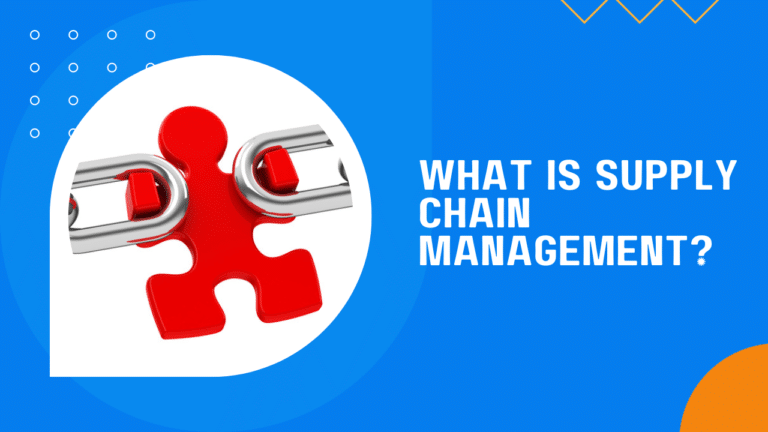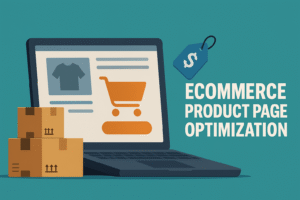Welcome to the complex yet fascinating landscape of supply chain management (SCM). If you’re in the ecommerce business, you’ve likely heard the term tossed around. But what does it really mean? More importantly, why should you care?
Ah, the questions are many, but the answers are crucial. You see, SCM is not just a buzzword; it’s the backbone of your ecommerce operation. From procurement to production, and from distribution to customer satisfaction, every step is a link in your supply chain.
Hold on, it gets better. Mastering SCM can significantly impact your bottom line. It can streamline operations, reduce costs, and elevate customer satisfaction. In short, it’s not something to overlook.
So, let’s embark on this journey to understand the nuts and bolts of supply chain management and why it’s an absolute must-know for anyone in the ecommerce industry.
What is Supply Chain Management (SCM)?
The term “supply chain management” might sound complex, but its essence is straightforward. Let’s break it down.
Definition and Basics
Supply Chain Management, or SCM, is the strategic coordination of business functions within a company and across businesses within the supply chain, for the purpose of improving the long-term performance of the individual companies and the supply chain as a whole. In simpler terms, it’s the art and science of getting products from Point A to Point B, efficiently and effectively.
Wait a minute, it’s not just about shipping boxes. SCM encompasses a range of activities. These include sourcing raw materials, converting them into products, and finally delivering the finished goods to the customer. It’s a multi-step process that involves various stakeholders, including suppliers, manufacturers, distributors, and retailers.
Importance in Business Operations
Now, why is this so pivotal? Well, a well-managed supply chain can be a game-changer for businesses. It can lead to cost reductions, faster production cycles, and ultimately, a competitive edge. In an era where customers demand quick and reliable services, a streamlined supply chain is your ticket to customer satisfaction.
But there’s more. Effective SCM also allows for better inventory control, higher quality products, and increased profitability. It’s not just about cutting costs; it’s about enhancing the overall value proposition of your business.
In the context of ecommerce, SCM takes on an even more critical role. With the digital marketplace being highly competitive, the efficiency of your supply chain can make or break your business.
Key Components of Supply Chain Management
Understanding supply chain management is akin to solving a complex puzzle; each piece has its unique place and purpose. Let’s focus on the key components that bring this puzzle to life.
Procurement
First up is procurement, the process of sourcing and obtaining the raw materials needed for manufacturing. This is where the supply chain technically begins. Procurement involves not just purchasing, but also quality checks and vendor management.
Hold on, it’s not as simple as clicking “buy now” on a supplier’s website. Procurement is a strategic function that requires careful planning, negotiation, and relationship-building with suppliers. The goal is to secure the best quality materials at the most favorable terms.
Production
Next in line is production, the transformation of raw materials into finished goods. This is the heart of the supply chain where value is added to the products. Production involves various stages such as design, manufacturing, quality control, and packaging.
But wait, there’s a twist. In today’s fast-paced world, production isn’t just about churning out products. It’s about doing so in a way that’s efficient, sustainable, and responsive to market demands. Technologies like automation and data analytics are increasingly being integrated into the production process to achieve these goals.
Distribution
Last but certainly not least, we have distribution. This is the stage where finished products are moved from the manufacturing facility to the retailer, and ultimately, to the end consumer. Distribution involves transportation, warehousing, and inventory management.
Don’t underestimate this final stretch. A hiccup in distribution can lead to stock outs, delays, and unhappy customers. Therefore, optimizing this phase is crucial for maintaining customer satisfaction and loyalty.
Each of these components is a cog in the larger machinery of supply chain management. They work in tandem to ensure that the entire process runs like a well-oiled machine.
Best Practices for Supply Chain Management
In the dynamic landscape of ecommerce, supply chain management takes on a new level of complexity. The stakes are high, and the room for error is minimal. So, what are some best practices that can help ecommerce businesses navigate these challenges? Let’s find out.
Data Analytics
First on our list is data analytics. In an industry where consumer behavior can change at the drop of a hat, data is your compass. It provides actionable insights into various aspects of the supply chain, from inventory levels to shipping times.
Hold that thought—data analytics isn’t just about collecting numbers. It’s about interpreting them to make informed decisions. Advanced tools can help businesses forecast demand, identify bottlenecks, and even predict maintenance needs for machinery. In essence, data analytics enables you to be proactive rather than reactive.
Vendor Relationships
Next, let’s talk about vendor relationships. In ecommerce, your vendors are more than just suppliers; they’re strategic partners. A strong relationship with your vendors can make all the difference in ensuring a smooth and efficient supply chain.
But here’s the kicker: maintaining a good vendor relationship isn’t just about timely payments or bulk orders. It involves open communication, joint problem-solving, and a commitment to mutual growth. In a world where supply chain disruptions are becoming increasingly common, a reliable vendor can be your safety net.
Implementing these best practices can significantly enhance the efficiency and reliability of your ecommerce supply chain. It’s not just about cutting costs; it’s about adding value at every step of the way.
Actionable Insights for ecommerce Businesses
While best practices provide a framework, actionable insights are the tools that help you build within it. These are specific, implementable strategies that can take your ecommerce supply chain from good to great. Let’s explore a couple of key areas.
Technology Utilization
Firstly, technology isn’t just an enabler; it’s a game-changer. From cloud-based inventory systems to AI-driven demand forecasting, technology can automate and optimize various facets of your supply chain.
But wait—before you jump into the tech bandwagon, it’s crucial to identify the areas that need technological intervention. Is it real-time tracking, or is it automated warehousing? Once identified, invest in technology that aligns with your specific needs and business goals. The right technology can not only streamline operations but also offer a competitive edge.
Sustainability Efforts
Secondly, sustainability is no longer a buzzword; it’s a business imperative. Consumers are increasingly making choices based on a brand’s environmental impact. Therefore, integrating sustainability into your supply chain isn’t just ethically right; it’s also smart business.
Here’s the deal: sustainability isn’t just about using recycled packaging. It extends to energy-efficient operations, ethical sourcing, and waste reduction. By adopting sustainable practices, you not only contribute to environmental conservation but also attract a more conscious consumer base.
By focusing on technology utilization and sustainability efforts, ecommerce businesses can create a supply chain that is not just efficient but also responsible. It’s about creating a system that is resilient, agile, and aligned with the evolving needs of the market.
The Last Mile: Concluding Thoughts on SCM for ecommerce
In the fast-paced, ever-evolving landscape of ecommerce, supply chain management is not just a logistical necessity but a strategic asset. It’s the backbone that supports your business, ensuring that products move seamlessly from suppliers to customers.
So, what’s the bottom line? Effective SCM is not a one-size-fits-all model. It requires a nuanced approach that considers various components, from procurement and production to distribution. It’s about leveraging technology to make data-driven decisions and fostering sustainable practices that resonate with today’s conscious consumer.
In essence, mastering the complexities of SCM can provide you with a competitive edge, enhancing efficiency and customer satisfaction. It’s not just about moving products; it’s about moving your business forward.
And there we have it—a comprehensive look at Supply Chain Management in the realm of ecommerce. Whether you’re a seasoned business owner or a budding entrepreneur, understanding the intricacies of SCM can be your ticket to long-term success.









